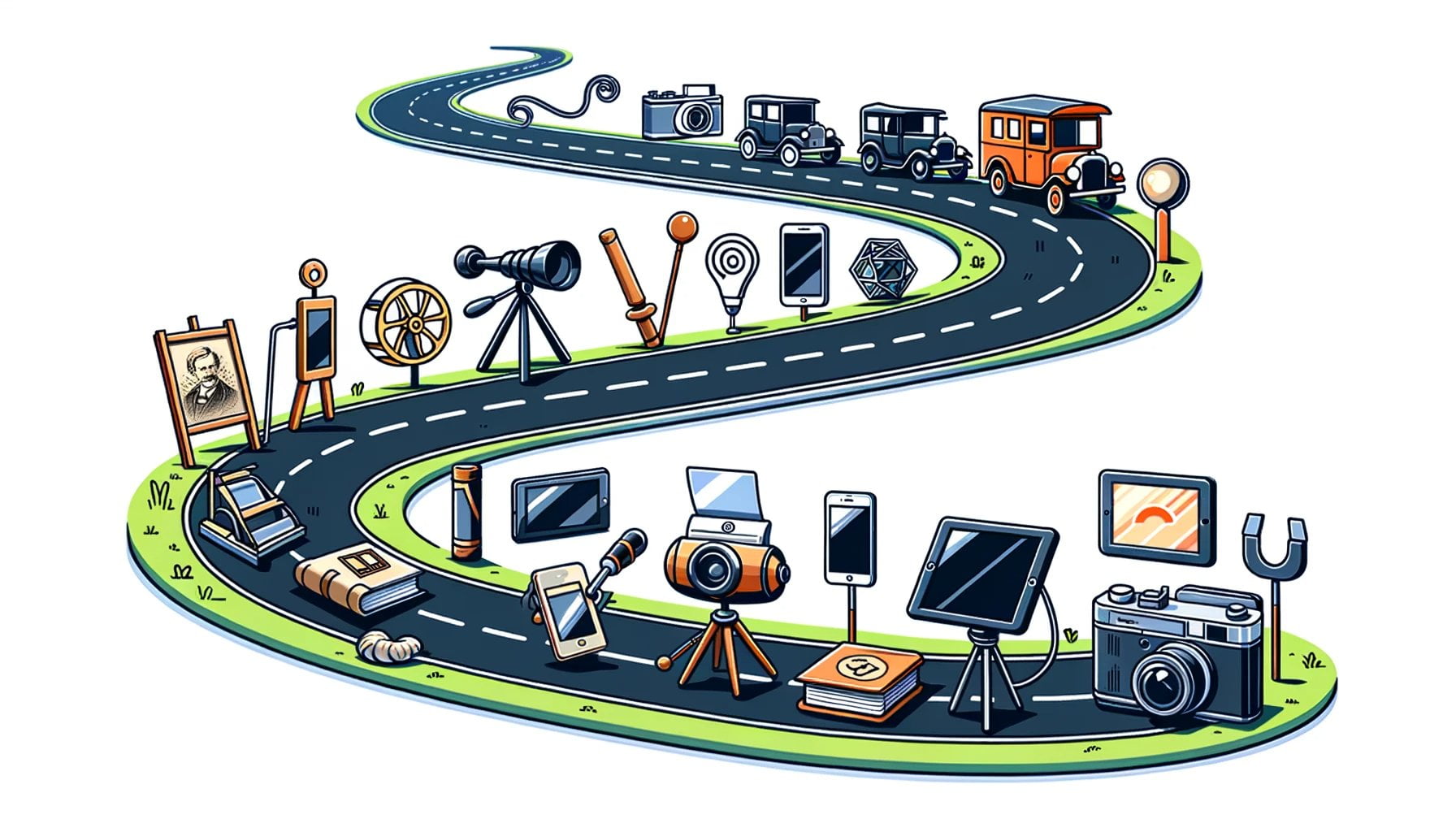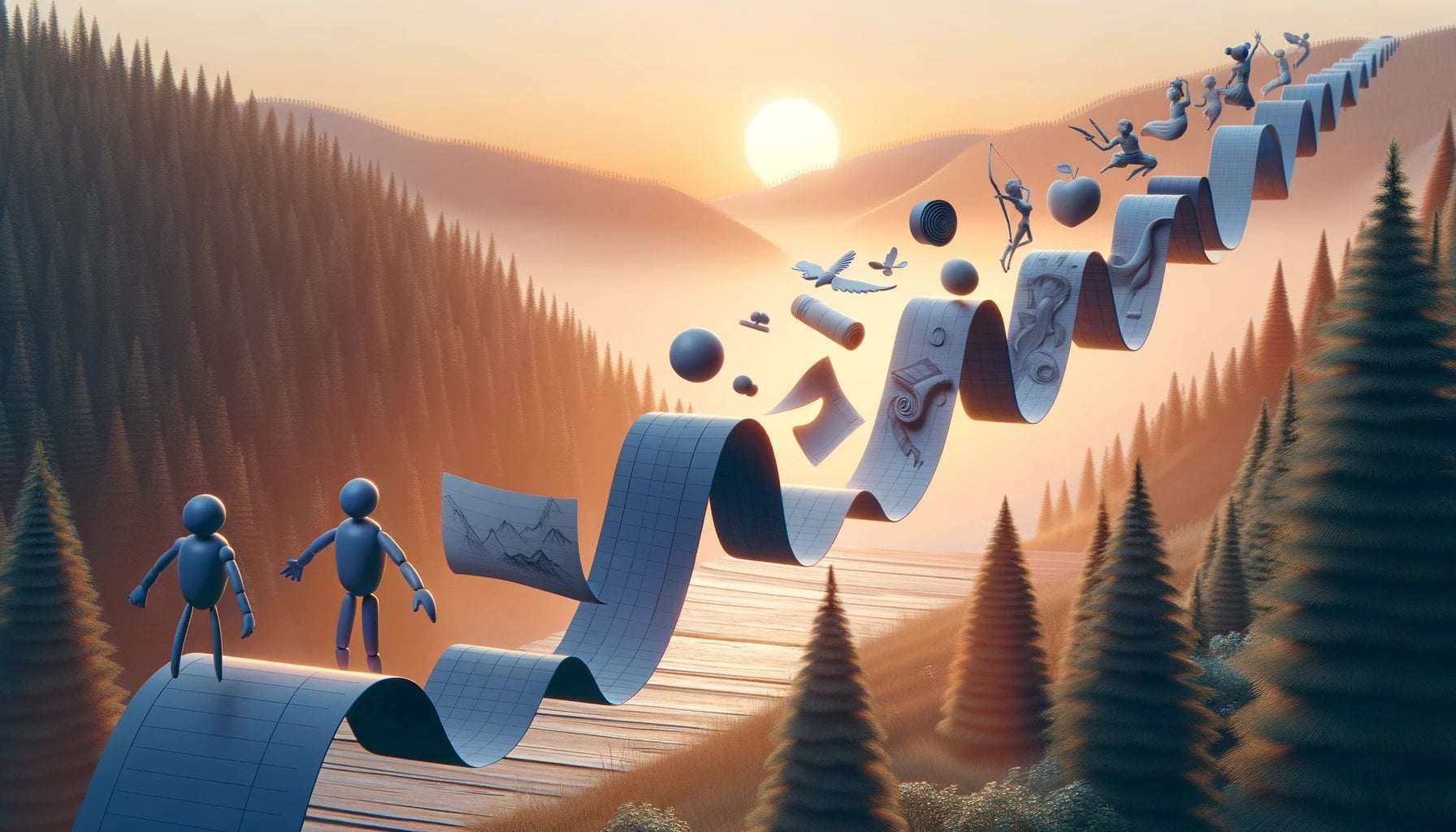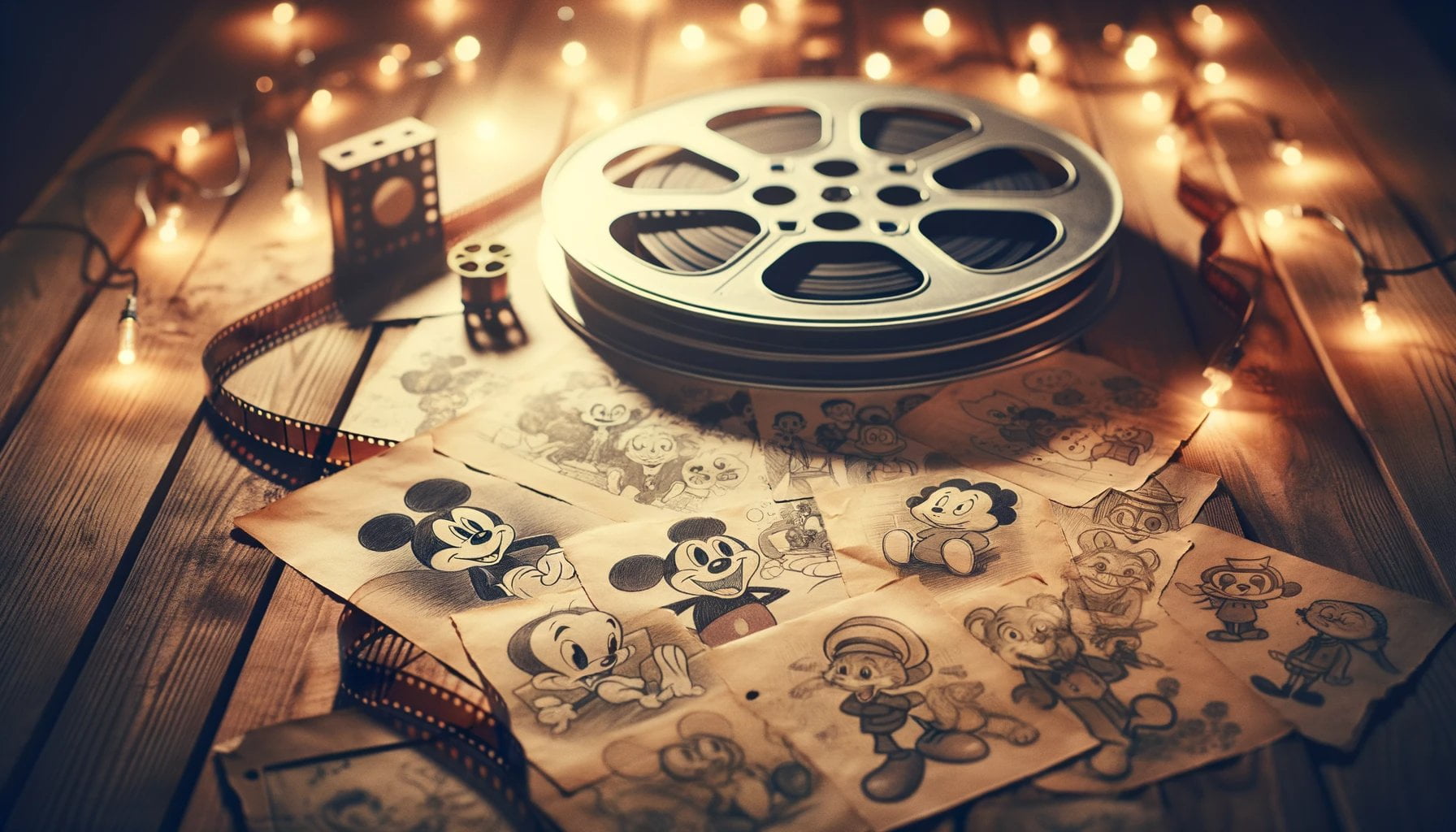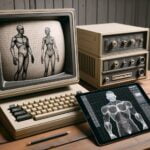Unraveling Animation History: A Concise Timeline takes readers on a captivating journey through the evolution of animation techniques, genres, and pioneering visionaries. From the early experiments of hand-drawn animation to the revolutionary advancements of computer-generated imagery, this comprehensive timeline offers a deep dive into the fascinating world of animation. With a keen eye for detail and a passion for storytelling, this article sheds light on the pivotal moments that have shaped this vibrant art form, providing an invaluable resource for animation enthusiasts and historians alike.

Key Takeaways:
- Animation history began after the invention of celluloid film in 1888.
- From 1895 to 1920, various animation techniques were developed, including stop-motion, puppets, clay, and drawn animation.
- Hand-drawn animation on cels became the primary technique during the 20th century.
- Computer animation became dominant in the early 2000s, while Japanese anime and European hand-drawn productions remained popular.
- Animation is influenced by ancient storytelling traditions, visual arts, and theatre.
- Techniques such as shadow play, mechanical slides, and magic lantern shows have influenced animation.
- Comic strips and illustrated children’s books have had a significant impact on animation.
- The stroboscopic illusion of motion, introduced in 1833, is the foundation of modern animation.
- The breakthrough of cinematography helped popularize animation through animated shorts and adaptations of comic strips.
- The Théâtre Optique, developed by Charles-Émile Reynaud, was a significant milestone in early film animation.
Animation History Timeline
Animation has come a long way since the emergence of celluloid film in 1888. Throughout history, various techniques have been developed, experimented with, and refined, paving the way for the vibrant and captivating animation we see today. In this article, we will take a journey through the evolution of animation techniques, genres, and pioneers, unraveling the intricacies of the animation history timeline.
The Early Years: Experimentation and Innovation
In the late 19th and early 20th centuries, visionary animators pushed the boundaries of storytelling through animation. Stop-motion, puppets, clay, and drawn animation were among the techniques that emerged between 1895 and 1920. These pioneers laid the foundation for the future of animation, exploring new possibilities and breathing life into what was once just a flickering illusion.
Hand-Drawn Animation Takes the Spotlight
Hand-drawn animation, painted on cels, soon became the dominant technique in the animation industry. This artistic approach allowed animators to bring characters and worlds to life frame by frame. Throughout most of the 20th century, hand-drawn animation captured audiences’ imaginations and paved the way for legendary animation studios like Disney and Warner Bros.
The Digital Revolution: Computer Animation Takes the Stage
Around the turn of the millennium, the animation landscape experienced a profound shift with the rise of computer animation. With advancements in technology, animators could now harness the power of computers to create stunning visuals and lifelike characters. This change revolutionized the industry, giving birth to animated movies that pushed the boundaries of imagination.
Culturally Rich Influences: Ancient Traditions and Artistic Inspiration
To understand animation’s rich tapestry, it is essential to delve into its cultural influences. Ancient traditions in storytelling, visual arts, and theater have shaped the way animated stories unfold on the screen. Techniques like shadow play, mechanical slides, and magic lantern shows have influenced animators throughout history, infusing their works with a hint of enchantment.
From Comic Strips to Animated Cartoons
Comic strips and illustrated children’s books have played a significant role in shaping animation as we know it today. The vibrant illustrations and dynamic storytelling found in these mediums captured the hearts of animators who sought to bring these visual narratives to life. As the art of animation evolved, beloved comic characters found a new medium to captivate audiences through animated cartoons.
The Stroboscopic Illusion: The Birth of Modern Animation
In the early 19th century, the stroboscopic illusion of motion was introduced, laying the groundwork for modern animation. This phenomenon, which creates the illusion of movement through rapidly changing images, fascinated artists and sparked their creativity. It was this mesmerizing illusion that paved the way for the breakthrough of cinematography, leading to the birth of animation as we know it today.
Milestones Along the Way: Théâtre Optique and Beyond
Throughout animation history, there have been several milestones that have propelled the art form forward. One such milestone was the Théâtre Optique, developed by Charles-Émile Reynaud. This device allowed for the projection of animated images onto a screen, captivating audiences with moving images and setting the stage for the future of animated cinema.
The Journey Continues
As technology advances and new storytelling techniques emerge, the animation industry continues to evolve. From its humble beginnings to the dazzling masterpieces of today, animation has captivated audiences of all ages and inspired generations of animators. Understanding the animation history timeline gives us a deeper appreciation for the art form and the visionaries who have brought animated stories to life.
So, next time you watch an animated movie or enjoy a cartoon, take a moment to appreciate the rich tapestry of history that has shaped this vibrant art form. From the flickering illusions of the past to the breathtaking wonders of the present, animation history is a testimony to the boundless creativity and innovation of human imagination.
If you’re interested in learning about the fascinating history of animation, click here to explore the evolution of this captivating art form.
The Rise of Animation Studios
Animation has come a long way since its humble beginnings. Let’s take a journey through the timeline of animation history, exploring the transformation of this captivating art form and the rise of animation studios.
Early Beginnings and Innovations
Animation has roots that trace back to ancient times, but the birth of modern animation can be attributed to the pioneers who experimented with various techniques. From stop-motion to hand-drawn and clay animation, these visionaries laid the foundation for what animation would become.
In 1888, the emergence of celluloid film allowed for the development of more advanced animation techniques. Artists began using this transparent, flexible material to create flip books and elaborate sequences of hand-drawn illustrations. This innovation paved the way for animation to evolve into a more sophisticated art form.
The First Animated Feature: A Landmark Achievement
In 1917, animation achieved a significant milestone with the creation of “El Apóstol,” the first feature-length animated film using traditional methods. This Argentine film set the stage for future animated productions and showcased the potential of animation as a storytelling medium.
However, it wasn’t until two decades later that animation truly took off with Walt Disney Studios’ release of “Snow White and the Seven Dwarfs” in 1937, the first-ever animated feature film. This groundbreaking achievement opened doors for animation studios and solidified animation’s place in the world of cinema.
Walt Disney’s Influence and Innovations
Walt Disney, a true pioneer in the animation industry, made significant contributions that shaped the art form as we know it today. In 1928, Disney introduced synchronized sound to animations with “Steamboat Willie,” featuring the iconic character Mickey Mouse. This marked a turning point in animation history, adding a new dimension to the medium.
Disney’s studio continued to push boundaries and innovate. From the introduction of Technicolor in “Flowers and Trees” (1932) to the first full-length animated musical, “Fantasia” (1940), Disney’s creations captivated audiences and set new standards for animation.
The Evolution of Animation Techniques
Over the years, animation techniques continued to evolve. The advent of computer-generated imagery (CGI) in the 21st century revolutionized the industry, allowing for more realistic and visually stunning animations. Films like “Toy Story” (1995) showcased the power of CGI and its ability to create immersive animated worlds.
With technological advancements, animation became more accessible to aspiring animators. Software tools and online resources allowed individuals to learn and create their own animated content, contributing to the rise of independent animation studios.
Key Takeaways:
- Animation has a rich history that dates back to ancient times, but modern animation began with pioneers who experimented with various techniques.
- The first feature-length animated film using traditional methods was “El Apóstol” in 1917, setting the stage for future animated productions.
- Walt Disney Studios’ “Snow White and the Seven Dwarfs” in 1937 was the first animated feature film, solidifying animation’s place in cinema.
- Walt Disney’s innovations, such as synchronized sound and Technicolor, pushed the boundaries of animation and captivated audiences.
- The rise of computer-generated imagery (CGI) in the 21st century revolutionized animation, allowing for more realistic and visually stunning creations.
- Advancements in technology have made animation more accessible, empowering aspiring animators to learn and create their own animated content.
Animation studios have played a vital role in the evolution and growth of animation as an art form. From Disney’s groundbreaking achievements to the rise of independent studios, animation continues to captivate and entertain audiences worldwide.
The Golden Age of Animation
During the Golden Age of Animation, which spanned from 1928 to around 1969, the world of animation experienced a remarkable transformation. This era introduced iconic characters like Mickey Mouse, Bugs Bunny, Popeye, and Tom and Jerry, captivating audiences of all ages. Let’s explore the highlights and evolution of animation during this pivotal period.
The Rise of Sound Cartoons
The Golden Age of Animation began with the popularization of sound cartoons in 1928. This innovation marked a significant milestone, as it brought animated characters to life with synchronized sound, enhancing the overall viewing experience. The introduction of sound opened new possibilities for storytelling and humor in animation.
A Shift in Perception
One defining aspect of the Golden Age of Animation was the shift in how animation was perceived. It transitioned from being primarily seen as entertainment for children to an art form that appealed to audiences of all ages. The popularity of animated characters like Mickey Mouse and Bugs Bunny showcased the universal appeal of animation and its ability to captivate viewers with its storytelling and humor.
The First Feature-Length Animated Film
In 1937, during the Golden Age of Animation, the first feature-length animated film was released: “Snow White and the Seven Dwarfs.” This groundbreaking achievement by Walt Disney Studios cemented animation’s place in cinema and introduced audiences to the magic of animated storytelling on a grand scale. It set the stage for future animated productions and showcased the artistic potential of the medium.
Flourishing in Theatrical and Television Mediums
Throughout the Golden Age of Animation, the art form flourished in both theatrical and television mediums. Theatrically, animated shorts delighted audiences in cinemas, showcasing the creativity and technical prowess of animators. On television, animated series like “Tom and Jerry” gained immense popularity, further solidifying animation as a form of entertainment for the masses.
Evolution of Animation Techniques
During this era, animation techniques evolved and became more sophisticated. While limited budgets influenced animation in the late 1950s, animators still managed to innovate and create remarkable works. As budgets increased, techniques became more complex and innovative, pushing the boundaries of what animation could achieve visually and narratively.
The Legacy of the Golden Age
The Golden Age of Animation left a lasting legacy that continues to influence contemporary popular culture. Characters and films from this era, such as Mickey Mouse, Bugs Bunny, and “Snow White and the Seven Dwarfs,” remain beloved and influential. The impact of the Golden Age can be seen in the continued fascination with animation and its ability to transport audiences into imaginative worlds.
Key Takeaways:
- The Golden Age of Animation spanned from 1928 to around 1969.
- It saw the rise of iconic characters like Mickey Mouse, Bugs Bunny, Popeye, and Tom and Jerry.
- “Snow White and the Seven Dwarfs” in 1937 marked the first feature-length animated film.
- Animation during this period appealed to audiences of all ages, transcending the perception of being solely for children.
- The Golden Age witnessed advancements in both theatrical and television animation.
- Animation techniques evolved during this time, becoming more complex and innovative.
- The legacy of the Golden Age of Animation can still be felt in contemporary popular culture.
In conclusion, the Golden Age of Animation was a transformative period in the history of the art form. It brought forth iconic characters, pushed the boundaries of animation techniques, and changed the perception of animation as entertainment. The impact of this era can still be felt and appreciated today, making it a golden period in the rich tapestry of animation history.
Modern Advancements and the Future of Animation
Animation has come a long way since its humble beginnings in the ancient world. From simple pottery animations in ancient Greece to the incredible computer-generated imagery (CGI) we see in modern films today, animation has evolved and advanced at an astonishing pace. In this article, we will explore the exciting modern advancements in animation and delve into what the future holds for this vibrant art form.
The Rise of Computer Animation
One of the most significant milestones in animation history was the rise of computer animation. With the development of technologies like Pixar’s RenderMan and the introduction of 3D graphics, computer-generated imagery has revolutionized the animation industry. This advancement has allowed animators to create lifelike characters and breathtaking visual effects that were previously impossible.
Virtual Reality and Augmented Reality
The future of animation lies in the realm of virtual reality (VR) and augmented reality (AR). As these technologies continue to improve and become more accessible, they offer exciting possibilities for animators to create immersive and interactive experiences. Imagine stepping into a virtual world where you can interact with animated characters or using AR to bring animated objects to life in your own environment. These advancements have the potential to transform the way we experience animation.
Artificial Intelligence and Machine Learning
Artificial intelligence (AI) and machine learning have also made their mark on the animation industry. AI algorithms can analyze vast amounts of data and generate realistic animations, reducing the time and effort required by animators. This technology can enhance the animation process, allowing for more efficient workflow and freeing up animators to focus on creativity and storytelling.
Real-Time Animation and Gaming
Real-time animation is another area that has seen significant advancements. With the power of modern gaming consoles and powerful computers, animators can create animations in real-time, offering immediate feedback and allowing for more spontaneous and dynamic animations. This technology has found its place in video games, where animations can adapt to player input, creating a more immersive and interactive gaming experience.
Key Takeaways:
- Animation has undergone a tremendous evolution, from ancient pottery animations to modern computer-generated imagery.
- Computer animation has revolutionized the industry, enabling lifelike characters and breathtaking visual effects.
- The future of animation lies in virtual reality and augmented reality, offering immersive and interactive experiences.
- Artificial intelligence and machine learning have enhanced the animation process, improving workflow and freeing up animators’ time.
- Real-time animation has found its place in gaming, creating dynamic and interactive animations.
With modern advancements in technology and the limitless creativity of animators, the future of animation is bound to be even more exciting and captivating. As we continue to push the boundaries of what is possible, animation will undoubtedly remain a cherished art form that delights audiences of all ages.

FAQ
Q1: When did the history of animation begin?
A1: The history of animation began after the emergence of celluloid film in 1888.
Q2: What are some animation techniques that were developed between 1895 and 1920?
A2: Various animation techniques were developed between 1895 and 1920, including stop-motion, puppets, clay, and drawn animation.
Q3: What technique dominated animation in the 20th century?
A3: Hand-drawn animation, painted on cels, became the dominant technique throughout most of the 20th century.
Q4: When did computer animation become the dominant technique?
A4: Computer animation became the dominant technique around the turn of the millennium, while Japanese anime and European hand-drawn productions remained popular.
Q5: What were some influences on animated movies?
A5: Animated movies are influenced by ancient traditions in storytelling, visual arts, and theatre. Techniques such as shadow play, mechanical slides, and magic lantern shows have influenced animation.
- Red Cloud, NE: Discover Willa Cather’s Legacy - April 11, 2025
- Remember Old Social Media Sites? Their Rise and Fall - April 11, 2025
- How many days till Feb 3?Accurate Countdowns & Tools - April 11, 2025
















